 |
 |
 |
| |
Trends in mortality in people living with HIV in an international cohort (RESPOND)
|
| |
| |
Mortality & Aging, Comorbidities in Europe/Australia RESPOND Cohort
Mortality With HIV Falls by One Third in Europe/Australia-
But Age at Death Still Greatly Lags That in General Population
30th CROI, Conference on Retroviruses and Opportunistic Infections, February 19-22, 2023, Seattle
Mark Mascolini
Cause-specific age-adjusted mortality fell steadily from 2012 through 2019 in RESPOND, a big European/Australian HIV study group [1]. Median age at death jumped from 52 to 56 over that period, still greatly lagging life expectancy in the general population.
Erich Tusch (University of Copenhagen) and RESPOND colleagues noted that stronger antiretroviral regimens powered the mortality drop recorded over the past decades. But other factors, like aging, coinfections, and comorbidities, complicate mortality trends. To get a better understanding of cause-specific age-adjusted mortality in Europe and Australia, researchers analyzed the RESPOND cohort consortium, a 17-cohort collaboration that began in 2017 and includes more than 30,000 people with HIV.
Prospective follow-up in this analysis covered the years 2012 through 2019. The RESPOND team used Coding Causes of Death in HIV (CoDe) methodology and compared age-standardized mortality over time. They used multivariable Poisson regression to explore all-cause mortality risk factors.
In this analysis 33,598 RESPOND members provided 167,930 person-years of follow-up or a median 4.8 years of follow-up for each person (interquartile range 3.1 to 8.0). Crude all-cause mortality dropped by one third from 13.0 per 1000 person-years in 2012-2013 to 8.6 per 1000 in 2018-2019. Median age at death climbed from 52 years in 2012-2013 to 56 years in 2018-2019, a death age that still compares bleakly with the 79-year life expectancy across Europe in 2023 [2].
Across the study period, non-AIDS cancers accounted for the highest cause-specific crude mortality rate, 2.20 per 1000 person-years, followed distantly by AIDS (1.01 per 1000), cardiovascular disease (0.85 per 1000), and liver disease (0.79 per 1000). However, age-adjusted Poisson regression analysis charted waning mortality over the study period for all four of these causes.
Multivariable analysis figured that the strongest predictor of all-cause mortality was current CD4 count below 350 plus current viral load above 200 versus a CD4 count above 500 and a viral load below 200 (adjusted incidence rate ratio [aIRR] 9.78, 95% confidence interval [CI] 8.29 to 11.5).
Other independent predictors of greater all-cause mortality in this analysis were HIV transmission by injection drug use (versus MSM transmission), heterosexual transmission (versus MSM transmission), intermediate (versus good) CD4 and viral load status, diabetes, chronic kidney disease, end-stage kidney disease, hypertension, abnormal lipids, cardiovascular disease, chronic untreated HCV infection, end-stage liver disease, current smoking, and former smoking (versus never smoking).
Independent predictors of lower all-cause mortality were more recent time period (2014-2015, 2016-2017, or 2018-2019 versus 2012-2013), non-white race, which cut chances of lower all-cause mortality by one third (aIRR 0.63, 95% CI 0.51 to 0.77), and living in eastern Europe versus central-west Europe, which cut chances of lower all-cause mortality about 20% (aRRR 0.78, 95% CI 0.63 to 0.96).
"All-cause mortality was strongly associated with modifiable risk factors," the researchers stressed, "especially immunologic [CD4] status and chronic conditions," results that map out "areas for improvement."
References
1. Tusch E, Pelchen-Matthews A, Peters L, et al. Trends in mortality in people living with HIV in an international cohort (RESPOND). 30th CROI, Conference on Retroviruses and Opportunistic Infections, February 19-22, 2023, Seattle. Abstract 870.
2. macrotrends. Europe Life Expectancy 1950-2023. https://www.macrotrends.net/countries/eur/europe/life-expectancy
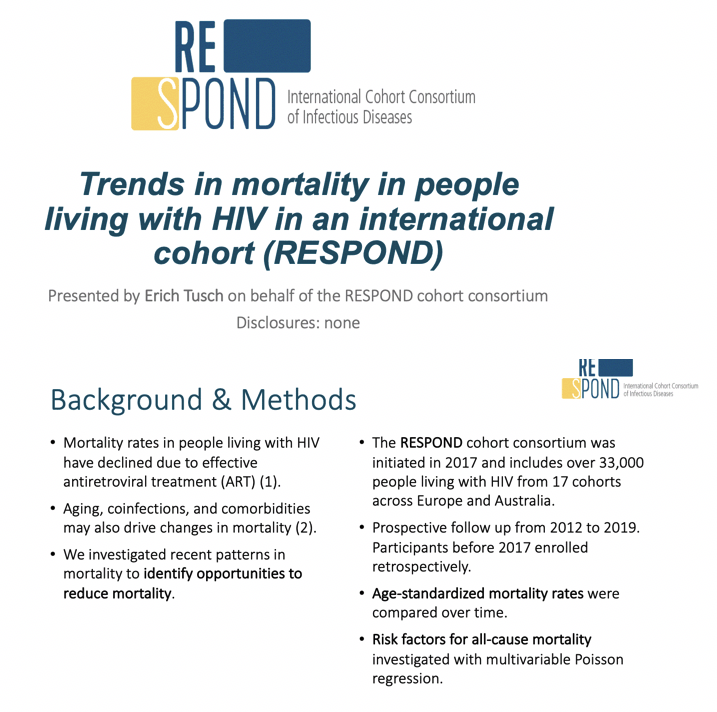
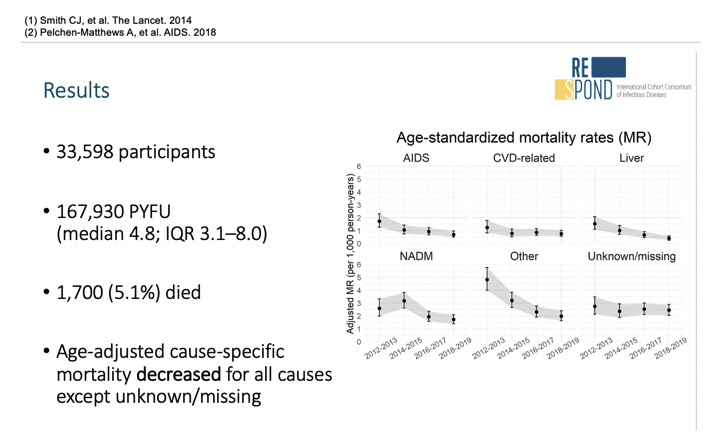



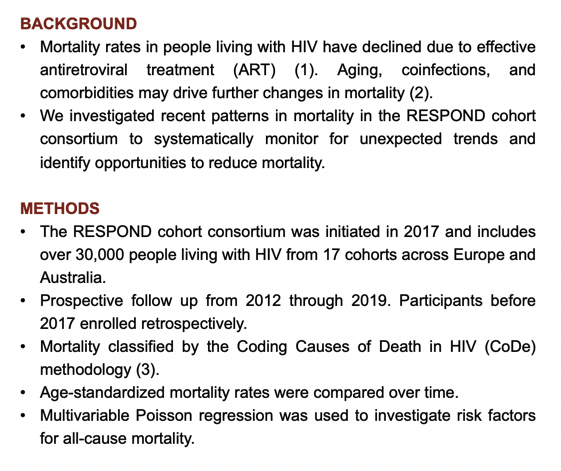
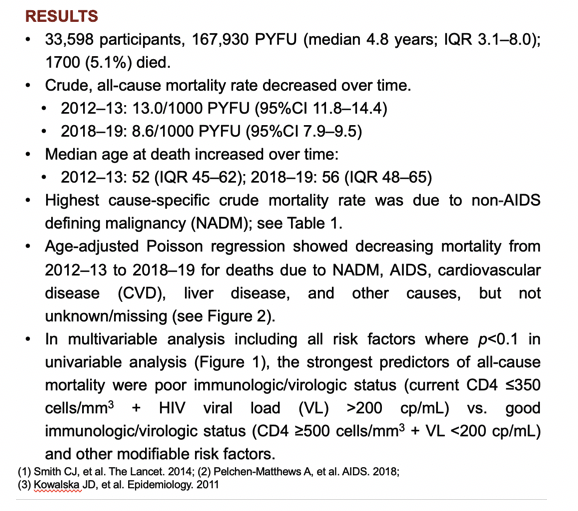

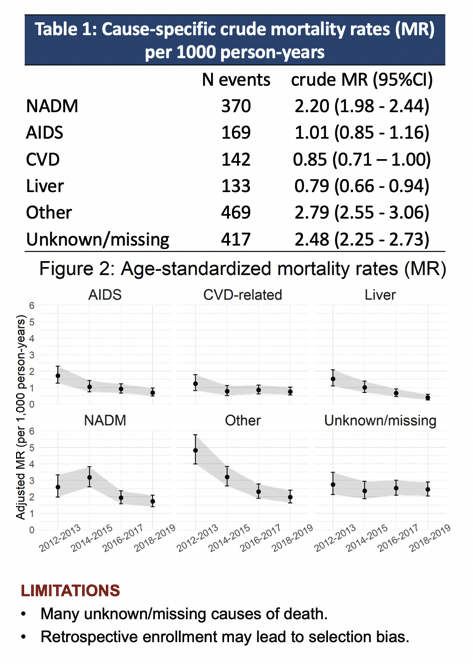
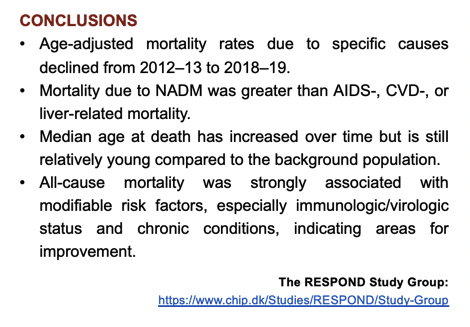
|
| |
|
 |
 |
|
|